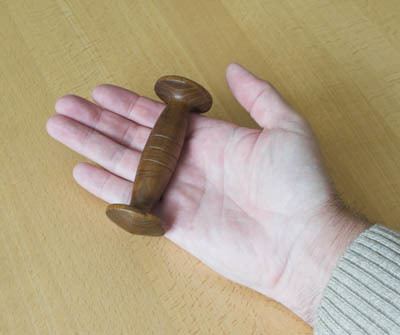 | ||
The yawara (also called pasak or dulodulo in Filipino martial arts) is a Japanese weapon used in various martial arts.
Contents
The Yawara originated from the use of Kongou, a Buddhist symbolic object, by monks in Feudal Japan. The Yawara takes the form of one or two small, thick sticks that protrude about an inch from each side of the hand. They are usually used in pairs to initiate throws, bone breaks, and pressure point strikes.
The yawara stick was popularized for police officers in the 1940s by Frank A. Matsuyama who made his own version in 1937 or earlier.
Legality
In the United States, yawaras are not intrinsically illegal in any jurisdiction. In the United Kingdom, "any article made or adapted for use for causing injury to the person, or intended by the person having it with him for such use" is defined as an offensive weapon under the Prevention of Crime Act 1953. This vaguely-worded measure may proscribe a yawara that is purposely manufactured or carried to be used as a weapon. However, because the yawara is essentially just a small cylinder, a wide variety of common everyday objects can be used in the same manner, making any outright legal ban all but impossible to enforce.
Yawarajutsu
Yawarajutsu is a martial art focusing on use of the yawara. It is sometimes referred to as yawara, and this name has been used interchangeably with jujutsu. There are similarities in the kanji for yawara (柔) and jujutsu (柔術). The yawara, tessen (iron fan), and short stick or jo (see jodo) can be used to apply yawara or jujutsu techniques. The yawara movements may have been derived from the sheathed knife techniques of tantojutsu.
